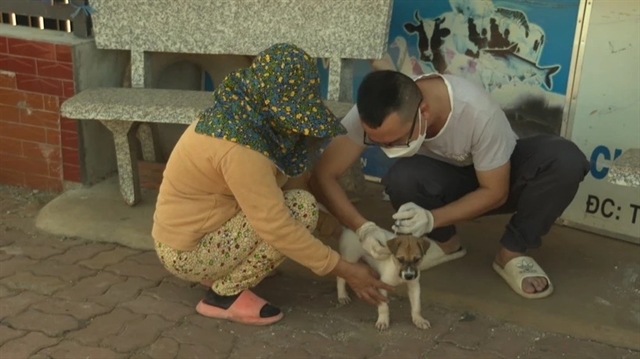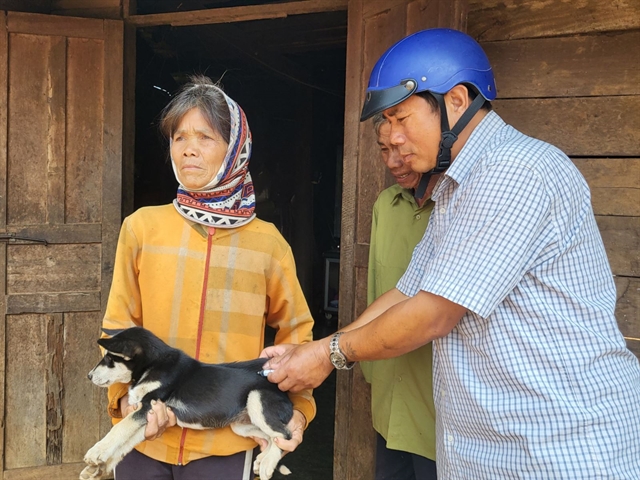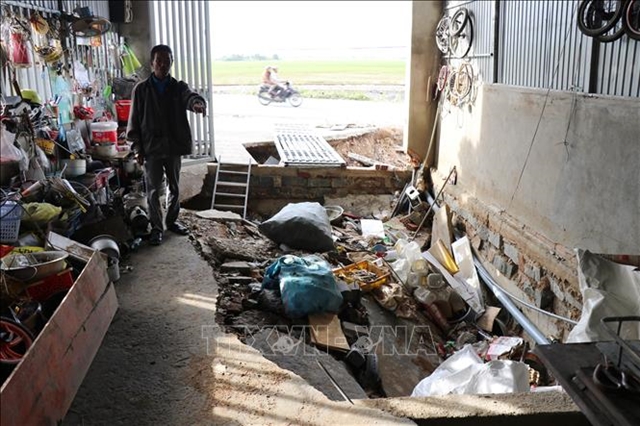 Society
Society

 |
| Rabies is a highly dangerous disease with an almost absolute fatality rate once symptoms manifest. — Photo dangcongsan.vn |
ĐẮK LẮK — Health authorities in the Central Highlands province of Đắk Lắk have issued a warning about rabies in the region.
In 2024, Đắk Lắk reported seven fatalities caused by rabies, placing it among the localities with the highest death toll from this disease in Việt Nam.
By early 2025, a new suspected rabies-related death in Krông Ana District has further heightened concerns about the potential spread of the virus.
According to the Đắk Lắk Centre for Disease Control (CDC), rabies is a highly dangerous disease with an almost absolute fatality rate once symptoms manifest.
The primary source of infection is domestic animals, particularly unvaccinated dogs and cats.
In 2024, many cases of animal bites were recorded across the province.
However, a significant number of residents have underestimated the risk and did not seek medical care or vaccination, directly leading to a high number of deaths.
The suspected rabies death on January 5, 2025, in Băng A Drênh Commune, Krông Ana District, serves as a stark reminder.
The victim, Y.N.H., born in 2014, initially exhibited symptoms such as severe vomiting, fatigue, hydrophobia (fear of water), and aerophobia (fear of wind) on January 1.
The family took the patient to Thiện Hạnh General Hospital in Buôn Ma Thuột City, where the child was later transferred to the Central Highlands General Hospital.
The diagnosis was advanced-stage rabies with suspected sepsis.
At 5:30pm on January 4, the family requested to take the child home. The patient passed away at 5:00am on January 5.
According to the family, about three months prior to hospitalisation, the child had been bitten on the left arm by their pet dog but did not receive a rabies vaccination afterward.
Following the fatality, the Đắk Lắk CDC promptly investigated the case and informed the Provincial Livestock and Veterinary Department, as well as the Krông Ana District Health Centre, to coordinate a response.
Additionally, the CDC provided counselling to the victim’s family and disseminated information on rabies prevention to the surrounding community.
Hoàng Hải Phúc, director of the Đắk Lắk CDC, stated that rabies remains a significant concern for the province’s healthcare sector.
To mitigate this risk, the healthcare system has implemented intensive public education campaigns on rabies prevention and control.
Healthcare workers have collaborated with local authorities to increase outreach, especially in high-risk districts.
However, Phúc acknowledged ongoing challenges in ensuring vaccine accessibility.
Many residents assume that domesticated dogs and cats do not pose a risk, resulting in a failure to seek vaccination after animal bites.
Additionally, geographical barriers, travel costs, and vaccination expenses create significant obstacles for residents in remote or economically disadvantaged areas.
In response, Phúc emphasised that preventing rabies requires collective action.
Community members must vaccinate their pets, promptly handle animal bites, and actively visit healthcare facilities for rabies vaccinations.
“When bitten by a dog or cat, if rabies symptoms develop, the disease becomes untreatable. Therefore, the only effective prevention method is to vaccinate as early and as quickly as possible. Moreover, stricter measures are needed to regulate the management of dogs and cats,” Phúc added. — VNS




